Boot: 2022-2023 Roxa R3 130 TI I.R.
Stated Flex: 130
Available Sizes: 24.5-30.5
Stated Last (size 26.5): 99-101 mm
Stated Range of Motion: 52°
Stated Forward Lean: 16°
Ramp Angle: 4°
Size Tested: 26.5
Stated Boot Sole Length (size 26.5): 300 mm
Blister’s Measured Weight (size 26.5):
- Shells, no Liners (left & right): 1327 & 1335 g
- Liners, no Footbeds: 249 g & 251 g
- Shells + Liners = 1576 & 1586 g
- Stock Insoles: 23 & 24 g
Buckles:
- “Easy Stride” Power Strap Cuff Buckle
- aluminum micro-adjustable 45° “Heel Lock”
- forefoot cable
Power Strap: 50 mm Velcro, integrated with top buckle
Shell Material:
- Cuff: Grilamid
- Lower Shell / Shoe: Grilamid
Liner: Intuition/Roxa Tongue Freeride Liner OR Intuition/Roxa Wrap Liner
Soles: replaceable Gripwalk (alpine and touring soles sold separately)
Binding Compatibility:
- w/ GripWalk soles: tech / pin bindings, MNC, Gripwalk (ISO 23223)
- w/ aftermarket Alpine soles: MNC, Alpine (ISO 5355)
- w/ aftermarket Touring soles: tech / pin bindings (ISO 9523), MNC
Tech Fittings: Dynafit Certified
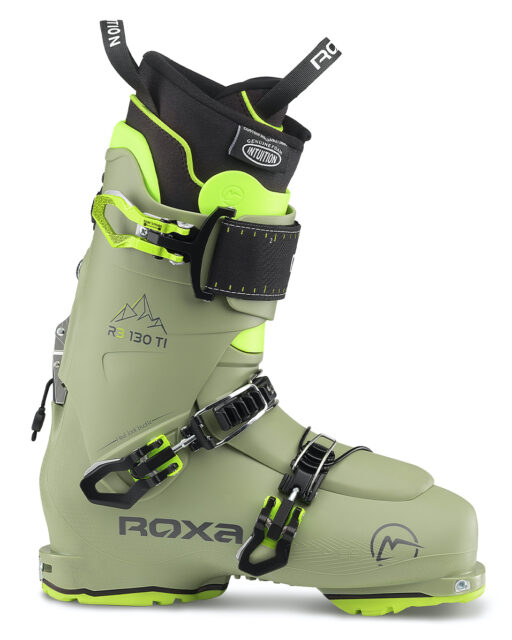
[Editor’s Note: In the interest of getting you information sooner on some of the products we’re reviewing, we’re posting here some of our measured specs and manufacturer details, and will update in the future. Take a look, and let us know in the Comments Section below what questions you’d like us to answer.]
Intro
Roxa’s freeride-touring R3 130 TI boot has been available in several iterations for a while, with a few revisions over the years. Previous versions have stood out for their quite stiff, more linear-feeling flex patterns; being available with wrap or tongue Intuition liners; and coming in at a weight comparable to mid-weight touring boots. At the same time, many skiers have enjoyed using the R3 130 for both resort and backcountry use, or even purely as an inbounds option.
Designed as a three-piece “cabrio” shell, the R3 130 is reminiscent of the Dalbello Lupo or Full Tilt Descendent series, and like those boots, the previous R3 130 required the tongue to be removed to utilize the boot’s full range of motion when climbing. While that makes for longer transitions, it adds the benefit of being able to dial in the flex pattern via aftermarket tongue options that Roxa sells. And despite on-paper similarities with other 3-piece boots, the R3 130 has always stood out by being significantly lighter than most other 3-piece touring boots.
The big change for the 22/23 R3 130 is a switch to a new hinged two-piece tongue, which Roxa says adds a notable increase in range of motion on the uphill without needing to remove it (but you can still remove it for extended range of motion).
Roxa markets the R3 130 TI as a 50/50 boot of sorts, and we’ve recently seen it used in settings as diverse as the Freeride World Tour to remote backcountry peaks…That’s certainly enough to intrigue us. We started spending time in the new R3 130 this past spring and will have more to say in the future, but in the meantime, here are the main details.
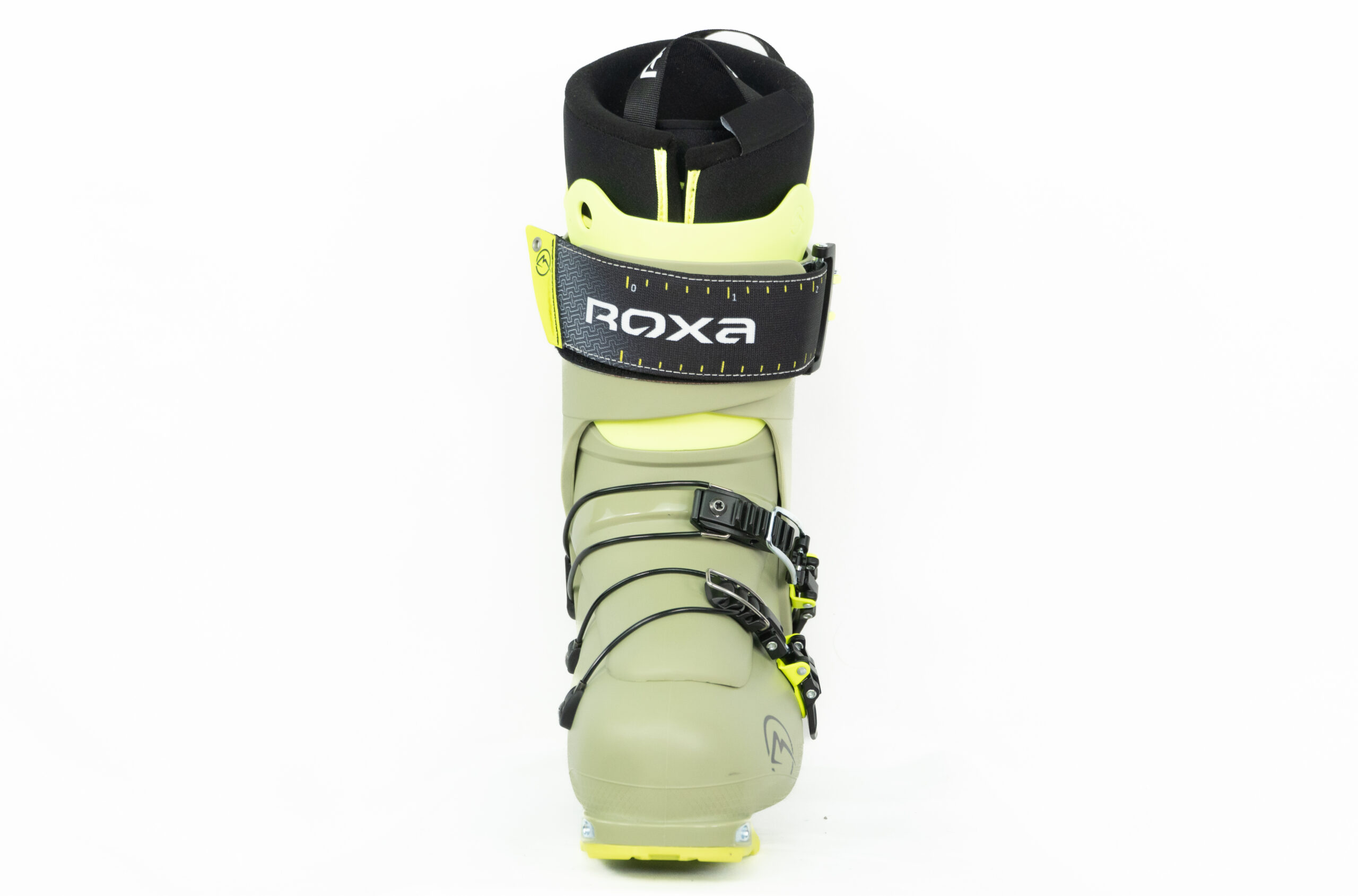
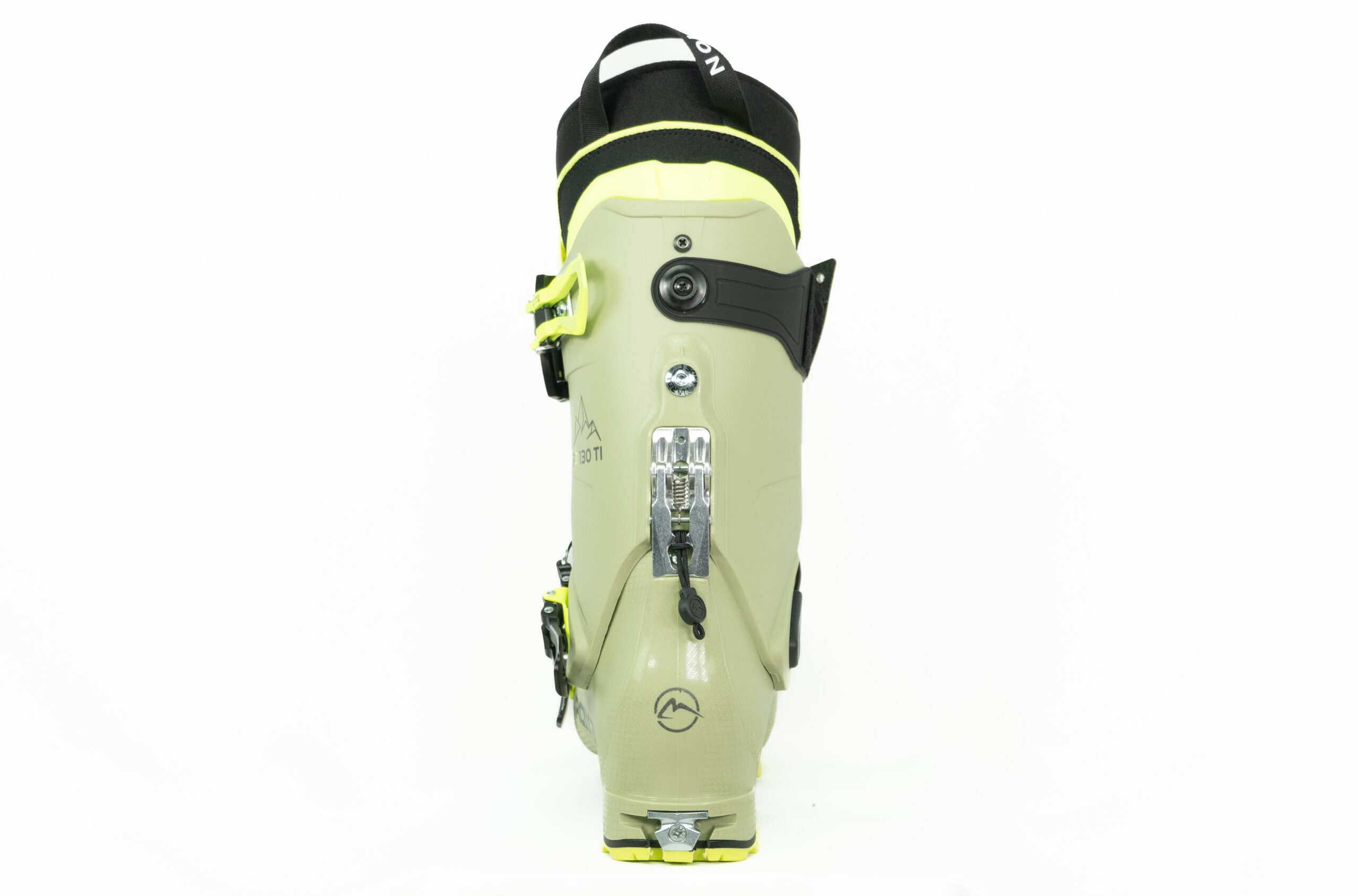
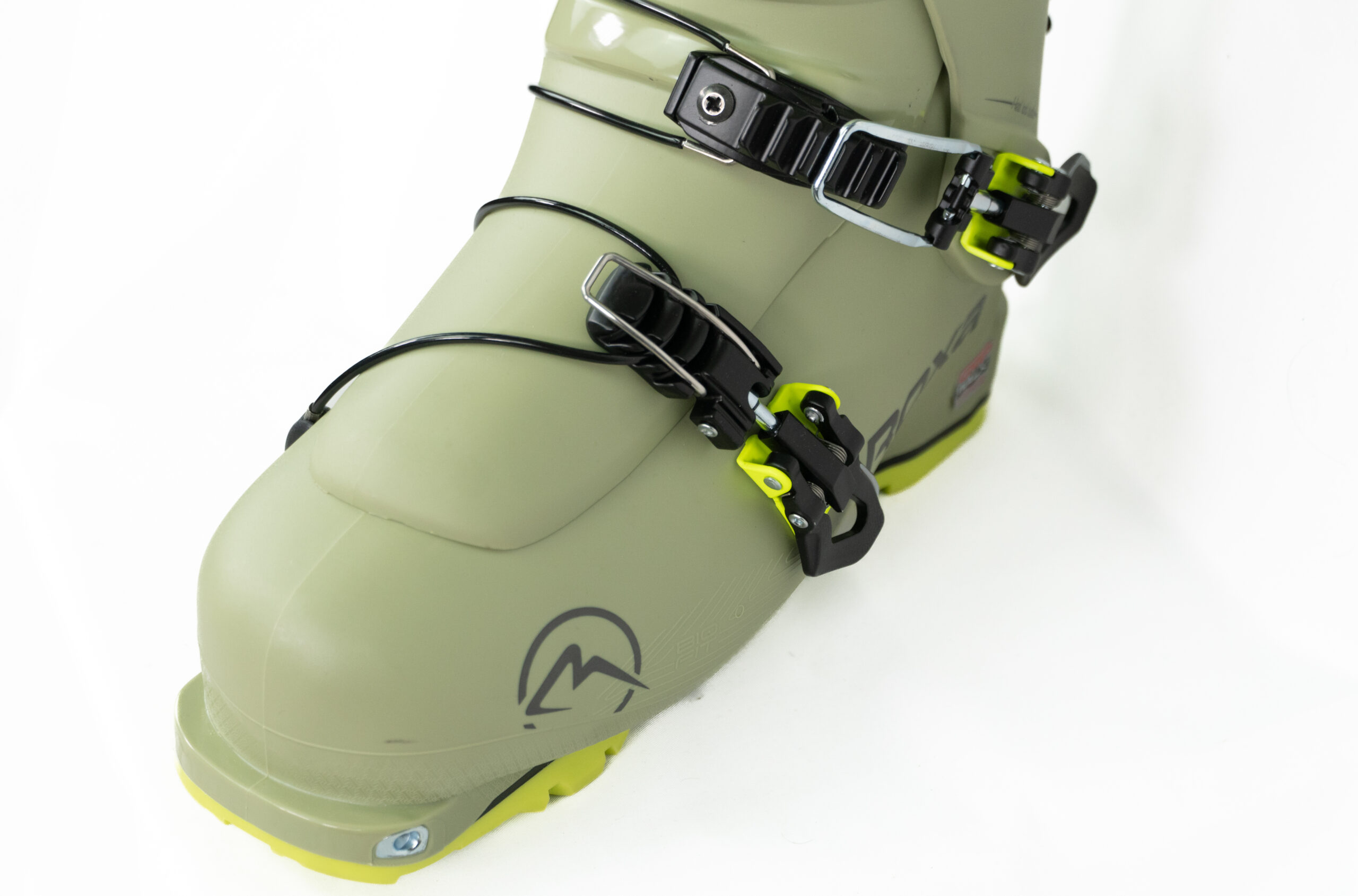
What Roxa says about the R3 130 TI
“At 1520 grams, the R3 130 TI – I.R. is one of the lightest high performance ‘One-boot-quiver’ ski boots ever offered. The 130 is geared for big mountain chargers who may use ‘Tech’ and/or Alpine bindings and often hike or skin to find their lines.”
The R3 Series
The R3 series is Roxa’s freeride-touring line of boots. While we see plenty of these in the resort, their weight, range of motion, and Roxa’s marketing all add up to boots that are clearly built with touring in mind. Here’s a rundown of the models in the lineup:
- R3 100 TI: 99-101 mm last
- R3 110 TI I.R.: 99-101 mm last
- R3 120 TI I.R.: 99-101 mm last
- R3 130 TI I.R.: 99-101 mm last, $950
Women-Specific R3:
- R3W 95 TI: 99-101 mm last
- R3W 105 TI I.R.: 99-101 mm last
- R3W 115 TI I.R.: 99-101 mm last
The lasts don’t change between models and are given as a range due to Roxa’s “BioFit” heat moldability of the shells (the stock last is 99 mm, but can reportedly be heat-molded out to 101 mm). The R3 130, R3 120, and R3W 115 feature Grilamid cuffs and lowers, while the R3 110 and R3W 105 move to polyurethane / Grilamid, and the R3 100 and R3W 95 are all PU. Weights are currently only listed for the R3 130 and 120, and both are stated to be 1520 grams for a size 26.5.
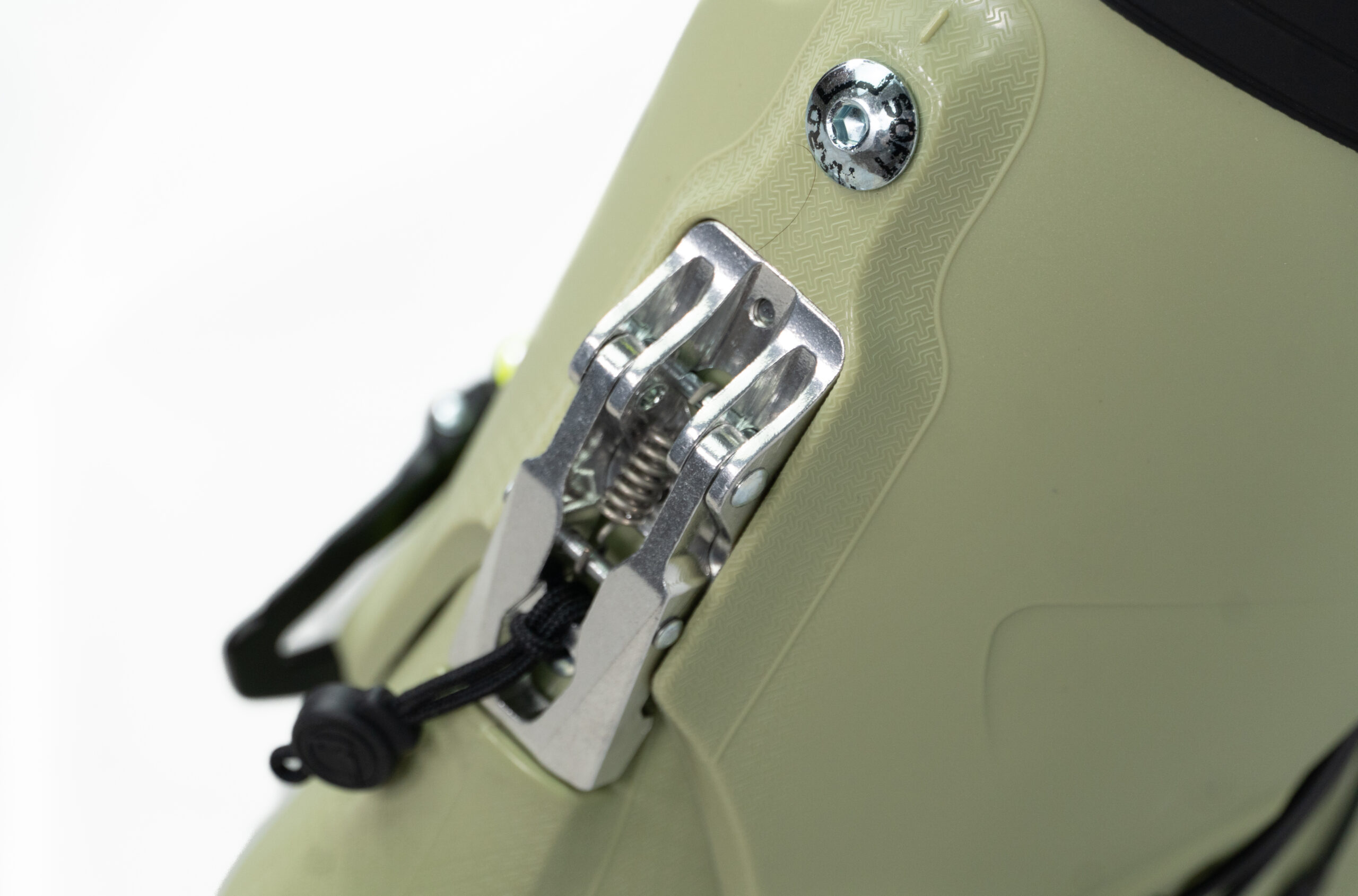
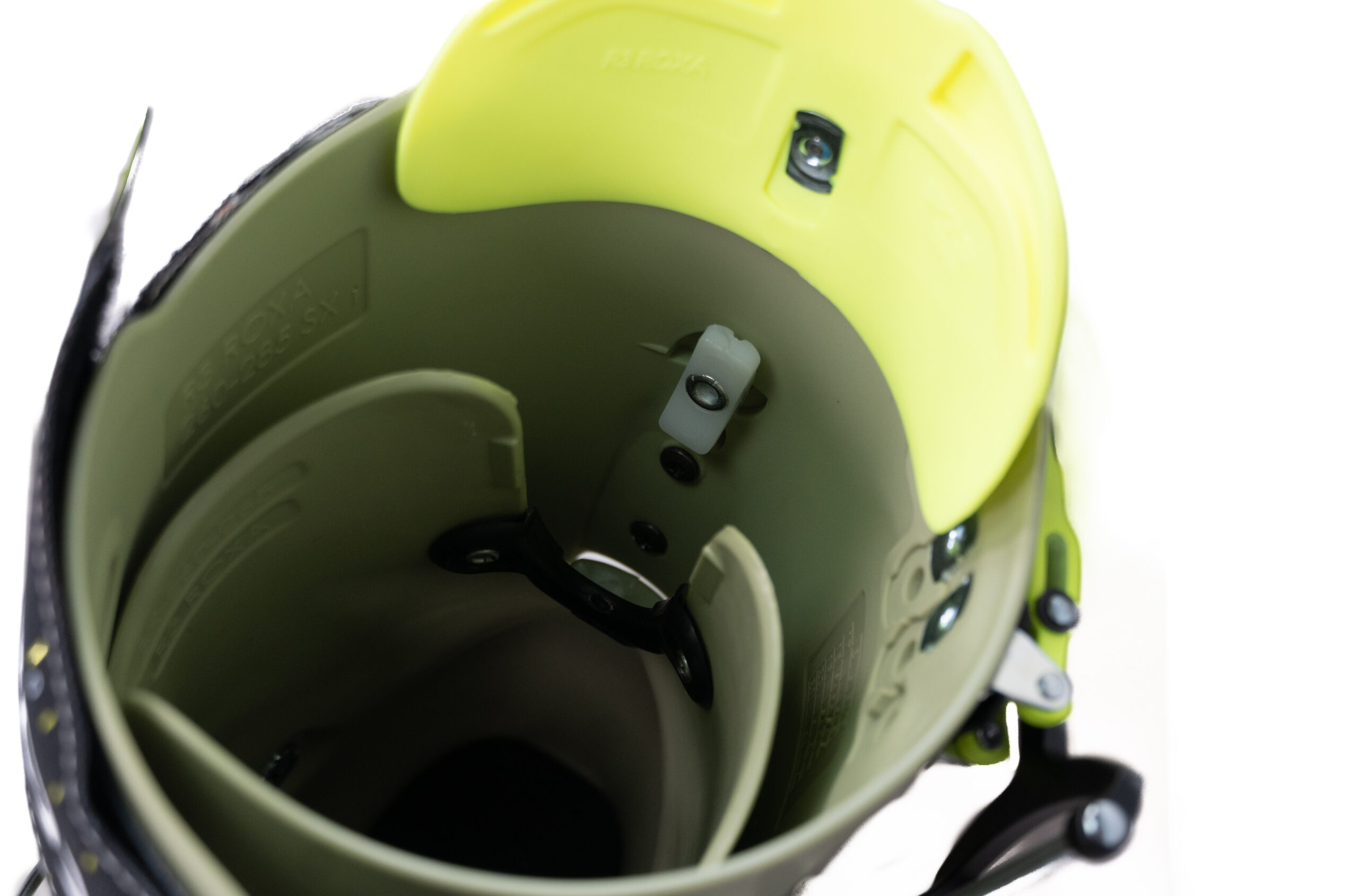
Weight & Comparisons
Weighing in at just under 1600 grams, the R3 130 TI I.R. could be described as a mid-weight touring boot. Yet perhaps because of its marketing, GripWalk soles, flex pattern, and observed usage, it seems to occupy a unique place between pure touring boots and heavier 50/50 boots.
Here are a number of our measured weights for some comparable boots. For our measured weights, we list the weights of each shell + the weights of each liner, then the total weight of the shells + liners.
Salomon S/Lab MTN Summit (26.5): 963 g & 971.5 + 212.5 & 215 = 1187 & 1178 g
Scarpa Maestrale RS (24.5 / 25.0): 1053 & 1057 + 244 & 245 = 1297 & 1302 g
Tecnica Zero G Tour Pro (26.5): 1099 & 1100 + 210 & 211 = 1309 & 1311 g
Dynafit Hoji Pro Tour (26.5): 1169 & 1174 + 214 & 215 = 1383 & 1389 g
Salomon MTN Explore (26.5): 1126 & 1135 + 281 & 281 = 1407 & 1416 g
Scarpa Maestrale XT (26.5 / 27.0): 1258 & 1258 + 247 & 252 = 1505 & 1510 g
Head Kore 1 (26.5): 1132 & 1136 + 392 & 393 = 1524 & 1527 g
Atomic Hawx Ultra XTD 130 (26.5): 1147 & 1150 + 403 & 404 = 1550 & 1554 g
Fischer Ranger Free 130 (26.5): 1204 & 1204 + 348 & 351 = 1552 & 1555 g
Roxa R3 130 TI I. R. (26.5): 1327 & 1335 + 249 & 251 = 1576 & 1586 g
Roxa R3 130 T.I. (27.5): 1319 & 1320 + 263 & 263 = 1582 & 1583 g
Head Kore RS 130 GW (26.5): 1334 & 1340 + 279 & 276 = 1613 & 1616 g
Dynafit Hoji Free (27.5): 1317 & 1332 + 331 & 325 = 1648 & 1657 g
Atomic Hawx Prime XTD 130 (26.5): 1242 & 1249 + 408 & 410 = 1650 & 1659 g
K2 Mindbender 130 (26.5): 1428 & 1427 + 346 & 348 = 1774 & 1775 g
Lange XT3 130 LV (26.5): 1407 & 1410 + 368 & 368 = 1775 & 1778 g
Nordica Strider Pro 130 DYN (27.5): 1445 & 1440 + 363 & 373 = 1808 & 1813 g
Tecnica Cochise 130 (26.5): 1398 & 1405 + 422 & 419 = 1820 & 1824 g
Dalbello Lupo Pro HD w/o Tongues (26.5): 1589 & 1596 + 266 & 267 = 1855 & 1863 g
Full Tilt Ascendant SC w/o Tongues (26.5): 1577 & 1576 + 286 & 288 = 1863 & 1864 g
Dalbello Lupo Pro HD w/ Tongues (26.5): 1747 & 1754 + 266 & 267 = 2013 & 2021 g
Full Tilt Ascendant SC w/ Tongues (26.5): 1740 & 1739 + 286 & 288 = 2026 & 2027 g
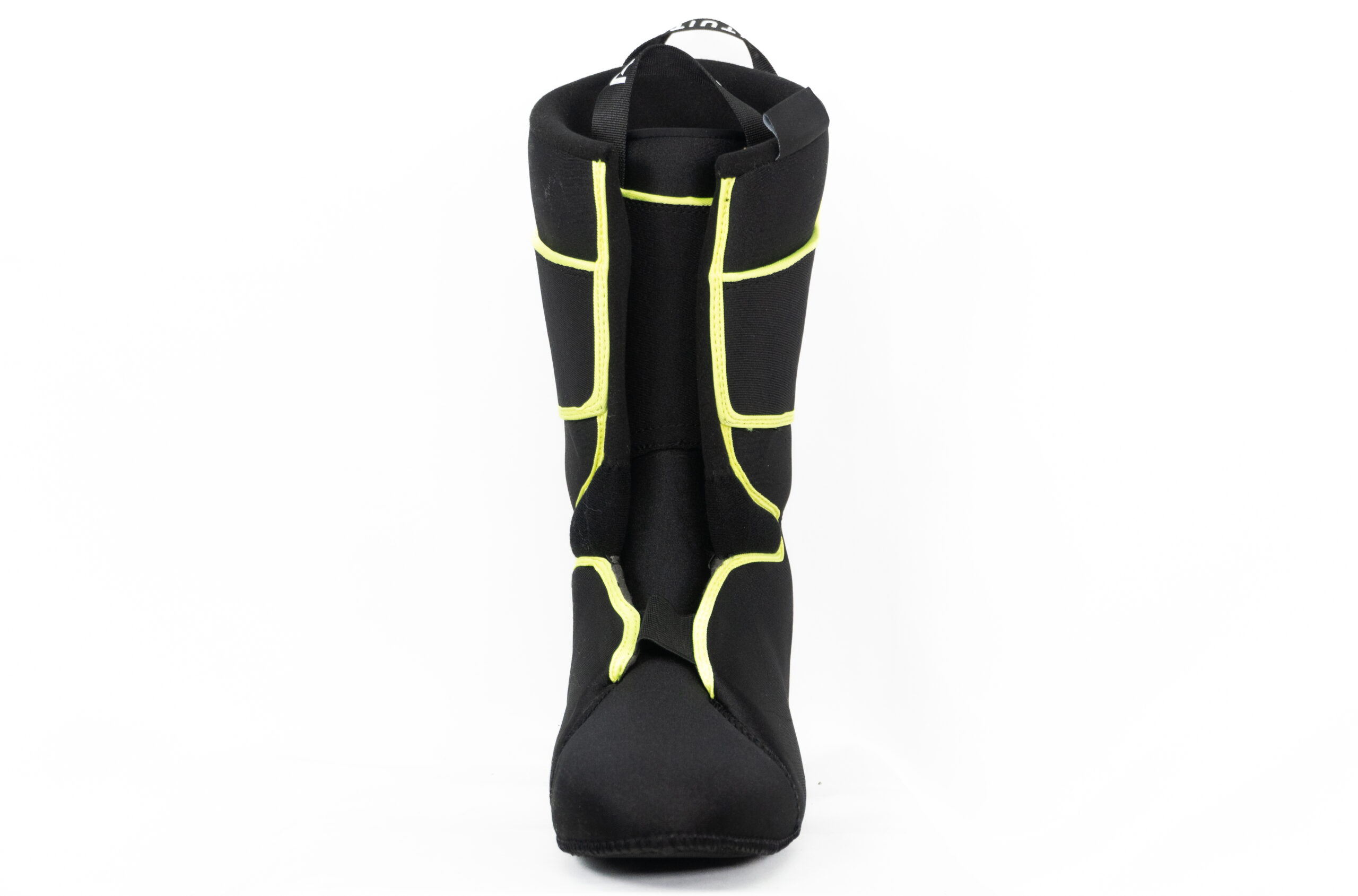
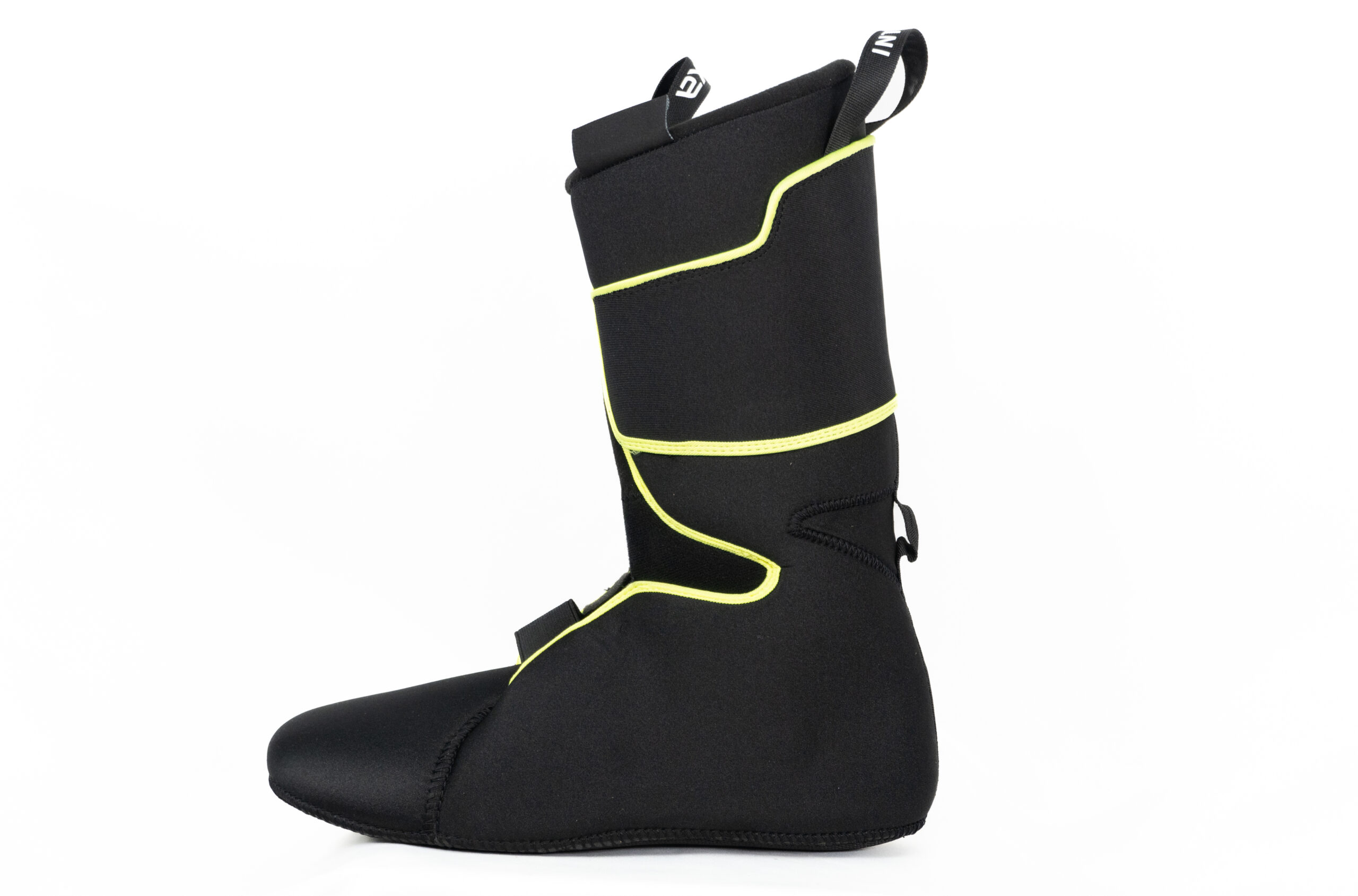
Things We’re Curious About
One of the main shortcomings of the previous version of the R3 130 TI was its moderate range of motion when walking (until you took out the tongue), so we are curious to see how much this new iteration has improved in that regard. Some of our reviewers also found the upright stance and stiff, linear flex pattern of the old model to not feel intuitive, so that’s another thing we’re curious to test. We’re also eager to see whether this is a boot that should be considered more for touring or as a 50/50 boot — or if it is truly the “do-everything” model — based on its hard-snow performance and comparisons to a range of other boots on the market now.
Bottom Line (For Now)
We have a few reviewers who are very excited to spend more time in this boot, along with a number of other new touring and 50/50 boots we’ve only recently received — we’re envisioning a conga line of reviewers each wearing mismatched boots, hustling up a thinly covered skintrack in November, eager to take a quick lap, trade off a steaming boot to the reviewer to their right, and do it all over again…So look out for updates come Fall, and let us know of any questions you have about this boot in the comments section below.



I had an old pair of Dalbello Sherpas with a two-piece tongue you didn’t have to remove for the uphill and really liked the feature. I’m a three-piece devotee, and Roxa’s been high on my list for a while now when it comes to possible Full Tilt/Dalbello successors in my boot quiver.
I’ve been skiing in this boot for the last season, approx. 20 days, including 20 km touring days.
Walking with the tongue in is pretty meh. In one of the particularly long days my shins got really bruised while walking up, so getting down was somewhat painful. I haven’t try to take the tongue off to speed up the transition. Also, tightening the boot at the transition is also somewhat lengthy.
Flexier tongue doesn’t play too well with aftermarket straps – the tongue flexes more than the strap, so the strap kinda limits this feature (I have Patriot straps).
The bootfitter also mentioned that the liners were quite thin and might need replacement soonish.
Other than that, the boot is pretty good as a do it all boot. 3 piece boots offer way more lateral support than 4 buckle ones. Also more convenient to take on and off. Good for apres and general walking. Durability seems ok, even after some nasty scrambling.
I used to ski Hawx Ultra XTD 120, and this boot is better in every regard, especially lateral support and taking it on and off as mentioned above. Both boots worn with just liner molding, no shell adjustments.
Hope that helps.
Is this the same hinged tongue that’s in the current Roxa Freetour I.R. boot?
Looks like it. I have that boot…skinned and skied in April here in Vermont. Loved it. Great incremental improvement to an already good boot.
Please note, although the boot is ISO 23223, the grip walk soles are not compatible with Pivot 15/18 bindings that are ISO 23223 compatible (also includes CAST pivots). There is about 3mm space between the AFD and grip walk sole to where you can feel the tip of your boot move in the bindings. These issues were solved when Roxa promptly sent out alpine soles. But alpine soles are not the best for touring or walking. I have encountered two other people who ride the R3s and they have had the same problem with R3 and pivot bindings.
Just purchased these boots and I have the Cast system installed. Your comment about about compatibility now has me in a low-key panic. Can you share a bit about how you resolved it? Did you contact Roxa (what did you say), and did they send you new soles to replace the GripWalks?
I have several pairs of skis with the Cast system installed and have been using the Roxa R3 boots for the past two seasons, with GripWalks, without any movement in the toe. The width of the GripWalks is slightly wider than the binding so the GripWalks are getting destroyed on the sides but it is still completely functional.
Hey Joel,
I am having a problem with my look Pivot heel and the Roxa ski boot. I went from a Dalbello 297mm boot to a Roxa 300mm. To make them work I have to add slightly more forward pressure than the mark suggests! If I hold the correct forward pressure the Pivot arms are too long and the binding doesn’t look right around the heel of the Roxa boot?!?
Cheers
Have you had anymore feed back? I have done the same thing.
I also feel if you mount for the correct sole length (300mm) you will have the same problem! It seems when you hold forward pressure the heel piece isn’t closer enough to the back of the boot!!
A solution is to mount for a 305mm sole length. This is from my own testing on a old rossi race ski with the 3 different settings for drill holes. Centre line to centre line of the furthest holes is 282mm+-
cheers
How is the size compare to Full Tilt?